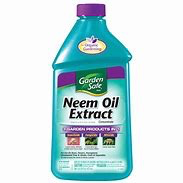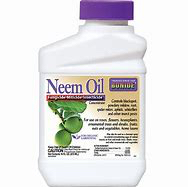Neem oil is a naturally occurring pesticide, effective against both pests and diseases.
Azadirachtin is the most active component of Neem oil for repelling and killing pests.
- To kill insects, it interferes with their hormone systems, disrupting feeding, molting, mating, and egg-laying processes.
- Since it acts directly on insects that chew on leaves it is considered safe for such beneficial insects as butterflies, ladybugs and lacewings.
- However, other sources say that Neem oil should be applied when beneficial insects are dormant and not feeding or pollinating.
- Still other sources say that one way in which Neem oil controls insects is by smothering them — disrupting their respiratory system. It’s difficult to imagine that this effect is limited to harmful insects, so it may be best to consider Neem oil as a broad-spectrum insecticide and avoid using it where beneficial insects may be present.
- As a repellant it acts against aphids and whiteflies.
Neem oil also acts against a number of fungi and bacteria. Sprays containing clarified hydrophobic extract of neem oil are used as fungicides against rust, black spot, powdery mildew, leaf spot, and blight.
Neem oil is also described as a miticide, effective against the tiny arachnids known as mites. However, in practice we had little success in trying to use Neem oil for control of pear blister mite in our pear trees over the course of two growing seasons.
It is recommended that Neem oil be applied in the morning or evening since the spray can burn foliage if sprayed in the mid-day sun.
Also note that azadirachtin is rapidly broken down by microbes and light and so must be reapplied every few days.
- The half-life of azadirachtin in soil ranges from 3-44 days.
- On plant leaves; the half-life is 1-2.5 days.
- The remaining components of neem oil are broken down by microbes in most soil and water.




